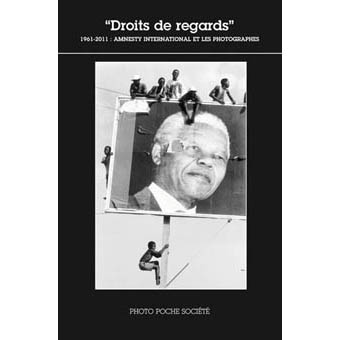COLLECTIF
Introduction et commentaires des photographies - Michel Christolhomme
Editeur : ACTES SUD
Année de parution : 2011
Au delà de l’horreur que peuvent inspirer certaines images, il importe de s’attarder sur le rôle déterminant que la photographie a joué en faveur du combat pour les droits humains ces cinquante dernières années. Telle image, par exemple, a contribué à faire douter l’opinion publique d’un pays entier (les États-Unis) de la justesse de la guerre dans laquelle il était engagé. A donc contribué à y mettre fin. Telle autre, qui constitue un document accablant sur un génocide (celui des Mayas), sert de preuve dans la condamnation des coupables et de ferment de la réparation due aux victimes.
Beaucoup aussi de ces photographies sont des témoignages de victoires : comme par exemple, celles de femmes qui votent, se forment, l’emportent sur les assassins de leurs enfants… D’autres représentent des personnes dont toute la vie a été consacrée au combat pour les droits humains et qui en sont devenues des figures emblématiques, comme Martin Luther King et Nelson Mandela. Car notre époque s’occupe – bien davantage qu’aucune autre avant elle – des droits humains. Qui souvent jusque-là n’étaient pas même identifiés et dont – justement – il n’y avait pas d’images.
Dans l’histoire contradictoire des droits humains – qui est sans doute la grande épopée de notre temps – la photographie joue un rôle essentiel. Elle montre et elle témoigne… dans le moment même, des événements. Et, au-delà, elle garde vive notre mémoire individuelle et collective.
Ce livre est la preuve qu’elle constitue également un appui déterminant dans le travail des organisations et des mouvements qui se donnent – comme Amnesty International – la mission d’identifier, de nommer, de dénoncer les violations des droits humains."Droits de regards"
(Rights of Inspection)
1961-2011: Amnesty International and photographers. Since 1961 these past fifty years total without a doubt the greatest number of human rights violations: arbitrary arrests and emprisonments, torture, humiliating treatments, murders, violence, seizure of civil and political rights. Anyone could randomely choose, at any moment, a corner of the globe and recount tragic events that have occurred. Therefore the selected photographs in this book constitute obvious evidence of barbarity: from the summary execution of a prisoner or from a little girl running away from a napalm bombed village to genocidal crimes or murders of political opponents, from refugees’ and immigrants’ despair to the one of battered women, enslaved children or prostitutes, men and women thrown out on the streets as a result of the laws of economics.
Beyond the horror that some photos may inspire, it is important to linger on the decisive role that photography has played in favour of human rights these past fifty years. For instance one image urged the people of an entire nation (United States) to doubt the justice of a war it was engaged in.
And thus contributed to putting an end to it. Another one, a damning document on a genocide (the Mayan’s), provided evidence in conviction of criminals and the due process of reparation owed to the victims. Many of these photographs account for victory: for instance, womens’ right to vote, to be educated, to defeat their children’s murderers. Others represent people who devoted their lives to human rights and became symbolic figures such as Martin Luther King and Nelson Mandela. Our current period in time, more than any ever before, strives to defend human rights.
Up until then, often unrecognized, there were no images. In the contradictory history of human rights – which is without a doubt the biggest epic of our time, photography plays an essential role. It shows and witnesses… in the moment, events as they occur.
And beyond that it keeps our individual and collective memory alive.
This book is proof that photography provides conclusive support of the work that non-profit organizations and movements like Amnesty International whose mission is to identify, record and denounce human rights violations.
Introduction and photography comments
by Michel Christolhomme

Lettre d’information
75004 Paris – France
+33 (0)1 42 74 26 36
ouverture du mercredi au samedi
de 13h30 à 18h30. Entrée libre
M° Rambuteau – Les Halles
Pour Que l’Esprit Vive
20 rue Lalande
75014 Paris – France
T. 33(0)1 81 80 03 66
www.pqev.org

